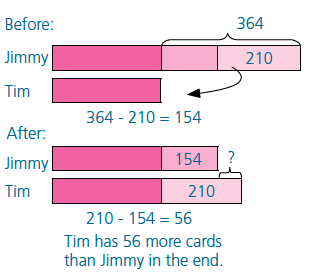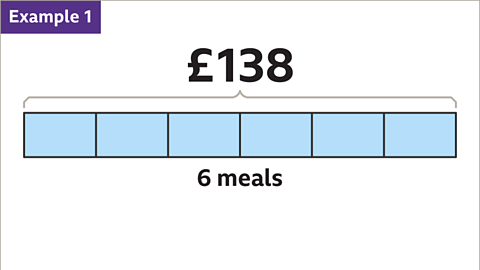Enhance your math lessons using bar model drawing techniques for better comprehension
Wiki Article
Exploring Bar Model Drawing Techniques: A Comprehensive Guide to Picturing Mathematics Concepts
Bar version attracting methods act as a useful resource for both instructors and students in envisioning mathematical ideas. These models streamline complex mathematical partnerships, helping in the understanding of addition, reproduction, subtraction, and department. This overview details effective techniques for applying bar models, cultivating energetic interaction and real-world connections. As viewers explore the functional applications and mentor tips, they will discover just how these strategies can transform their method to maths.Recognizing the Basics of Bar Design Drawing
Bar design drawing functions as an effective aesthetic device in maths, helping with the understanding of mathematical connections and problem-solving techniques. This strategy entails standing for numbers and their partnerships via rectangle-shaped bars, making it less complicated to visualize operations such as enhancement, reproduction, department, and subtraction. Each bar's size corresponds to a details value, permitting students to contrast amounts and understand proportions clearly.To develop a bar model, one starts by recognizing the problem's vital aspects, usually damaging it down into parts that can be aesthetically stood for. In an easy addition issue, two bars can be drawn, with their lengths standing for the addends. The combined length shows the amount. Additionally, bar versions can be adjusted for extra complex problems, including fractions and ratios, by readjusting benches accordingly. Mastering these fundamentals lays a solid structure for efficient analytic and deeper mathematical comprehension.
Benefits of Utilizing Bar Designs in Math
Using bar versions in mathematics offers numerous benefits that enhance discovering and comprehension. These graphes aid pupils in realizing intricate principles by breaking them down right into convenient parts. Bar versions provide a clear framework for highlighting partnerships between numbers, making abstract concepts more concrete. They advertise a deeper understanding of mathematical operations and promote analytic by permitting learners to envision the information they are working with.Moreover, bar versions sustain the growth of vital assuming abilities, as trainees should examine and interpret the visual info to draw conclusions. This approach encourages active interaction with the product, reinforcing retention and mastery of mathematical concepts. By promoting a strong structure in visual literacy, bar designs equip students to approach numerous mathematical obstacles with self-confidence. Overall, the integration of bar models into maths education and learning verifies advantageous in growing both comprehension and analytical abilities amongst pupils.
Using Bar Versions to Addition and Reduction
Bar versions offer as an efficient device for aesthetically standing for addition and subtraction problems. By highlighting the partnership in between numbers, they improve understanding and promote analytical. Furthermore, real-life applications of these models can help learners comprehend mathematical ideas in useful contexts.Representing Enhancement Visually
Visual aids can substantially improve their understanding of these procedures when trainees experience enhancement and subtraction problems. Bar designs serve as reliable tools for representing enhancement. By separating a rectangular shape right into sectors that match to the numbers involved, pupils can picture the relationship in between the quantities. As an example, if a pupil needs to include 3 and 5, they can create a bar separated into 2 areas: one area representing 3 and the other representing 5. This clear depiction not just simplifies the addition procedure but additionally strengthens the concept of incorporating quantities. As pupils manipulate these aesthetic help, they develop a deeper comprehension of addition, bring about improved analytical abilities and better self-confidence in their mathematical capabilities.
Reduction With Bar Models
Subtraction is typically regarded as a more complex operation than enhancement, bar models can successfully clarify this procedure for pupils. By aesthetically standing for the quantities included, trainees can much better comprehend how numbers connect to one another. In a bar model for reduction, one bar represents the total, while another suggests the amount being deducted. This visual distinction helps trainees realize the principle of "eliminating." If a bar reveals 10 units, and another bar standing for 4 devices is gotten rid of, trainees can easily see that 6 systems remain. This technique not only cultivates understanding of subtraction but also help in creating analytic abilities, enabling pupils to envision their mathematical thinking and improve their general comprehension of mathematical concepts.Real-Life Application Instances
Understanding reduction via bar versions lays a foundation for applying these methods in real-life scenarios. In various contexts, such as budgeting or purchasing, individuals can imagine just how much money continues to be after expenditures. For instance, if an individual has $50 and invests $20, a bar version can represent the overall quantity and the invested section, highlighting that $30 is left. Furthermore, parents can utilize bar designs to assist youngsters recognize how many even more items require to be contributed to complete a collection, such as having 3 apples and needing five. This graph simplifies intricate problems, facilitating understanding and retention. Ultimately, bar models work as efficient devices in daily decision-making, enhancing mathematical understanding in sensible situations.Envisioning Multiplication and Department With Bar Designs
In discovering the application of bar models for reproduction and division, it is vital to comprehend their foundational principles. Constructing reproduction designs permits learners to imagine partnerships between numbers, while reliable department techniques can be you can try these out shown through these visual help. This approach improves comprehension and analytical abilities in mathematics.Understanding Bar Models
Bar models offer as a powerful aesthetic tool for showing the principles of reproduction and department. They make it possible for learners to represent mathematical relationships in a structured format, assisting in a much deeper understanding of these procedures. In reproduction, bar versions display groups of equivalent size, permitting individuals to envision the complete quantity when incorporating these teams. Conversely, in division, bar designs aid depict just how a total amount is separated right into smaller sized, equivalent components, making clear the idea of dividing. By employing these aesthetic help, students can understand the underlying concepts of multiplication and department much more properly. This strategy not just enhances understanding yet additionally supports analytical skills, making bar models an indispensable asset in mathematical education.Building Reproduction Designs
Building multiplication versions utilizing bar diagrams offers a clear approach for envisioning the procedure of multiplication. These models make it possible for learners to stand for reproduction as groups of equivalent parts, making abstract principles extra concrete. To show (3 times 4), a student can attract one bar split right into three equal sections, each representing 4 devices. Furthermore, creating a 2nd bar with the same size enhances the understanding of duplicated enhancement, as each sector matches to one group. This aesthetic depiction not just help in comprehending multiplication however also boosts problem-solving abilities. By utilizing bar designs, pupils can much better understand partnerships between numbers and create a durable foundation for extra complicated mathematical concepts, leading to boosted confidence in their capabilities.Envisioning Division Approaches

Resolving Word Troubles Using Bar Model Techniques

In a trouble entailing enhancement and subtraction, pupils can draw different bars for each quantity and then manipulate them to locate the remedy. This procedure not just clears up the problem but likewise promotes a deeper theoretical understanding. Furthermore, bar versions can be adjusted for different sorts of word problems, making them versatile across various mathematical subjects. Inevitably, using bar designs can considerably improve pupils' analytic skills by offering a clear aesthetic pathway to come to the appropriate answer.
Integrating Bar Versions in Various Math Topics
Bar models can be perfectly incorporated into various math subjects, boosting pupils' understanding of ideas beyond basic arithmetic. In algebra, these visual tools help in representing formulas and inequalities, allowing learners to envision connections in between variables. When taking on geometry, bar designs can illustrate the homes of forms and spatial reasoning, helping pupils grasp ideas like location and perimeter efficiently. In stats, bar designs facilitate the interpretation of information collections, permitting trainees to compare amounts and identify fads aesthetically. Furthermore, incorporating bar versions within measurement subjects help in comprehending devices and conversions by offering a concrete representation of amounts. By employing bar models across different mathematical locations, teachers can foster a much deeper comprehension of complicated principles, thereby improving analytic skills and promoting critical thinking (bar model drawing techniques). This versatility shows the energy of bar versions as a fundamental device for pupils in their mathematical journeyTips for Training Bar Versions Effectively
Integrating bar designs right into mentor methods requires thoughtful strategies to maximize their effectiveness. Educators needs to begin by introducing bar models with simple, relatable examples that trainees can conveniently realize. This aids to develop self-confidence and familiarity with the concept. Gradually increasing the complexity of issues enables learners to apply their skills gradually. Furthermore, instructors should encourage students to create their very own bar designs, advertising active engagement and possession of their understanding.Incorporating joint tasks can likewise improve understanding, as trainees talk about and resolve troubles in groups. Continual responses is crucial; instructors ought to offer useful commentary on pupils' bar design representations to direct enhancement. Connecting bar designs to real-life situations enhances their importance, assisting pupils see the practical applications of their mathematical abilities. By applying these techniques, teachers can successfully harness the power of bar models in their maths instruction.
Regularly Asked Questions
Can Disallow Versions Be Made Use Of in Other Topics Besides Math?
Bar models can without a doubt be utilized in different subjects past math. They properly show principles in science, social studies, and language arts, assisting to aesthetically stand for connections, procedures, and concepts for enhanced understanding across self-controls.What Age Group Is Finest Matched for Learning Bar Models?
Bar versions are best matched for children ages 7 to 12, as they establish concrete thinking abilities throughout this duration (bar model drawing techniques). At this age, students can efficiently realize abstract ideas with graph and analytic methodsAre There Digital Devices for Creating Bar Versions?

Just How Can I Assess Pupil Recognizing of Bar Designs?
Assessing trainee understanding of bar models can include tests, empirical analyses, and seminar. Educators might also analyze students' finished models and their ability to explain their thinking, making sure an extensive analysis of comprehension.What Are Common Errors When Using Bar Designs?
Typical mistakes when making use of bar models include misstating quantities, failing to precisely classify bars, puzzling addition and subtraction, disregarding to utilize regular ranges, and neglecting the relevance of clear visual splitting up in look at this web-site between various elements.In addition, bar designs can be adjusted for much more complex issues, consisting of fractions and ratios, by readjusting the bars as necessary. Subtraction is usually viewed as an extra complex operation than enhancement, bar versions can successfully clarify this procedure for students. In a bar design for reduction, one bar represents the overall, while an additional shows the quantity being subtracted. If a bar reveals 10 devices, and an additional bar representing 4 units is gotten rid of, pupils can easily see that 6 units stay. When separating a total into equal groups, pupils can attract a lengthy bar to stand for the entire and after that sector it into smaller bars that indicate each group.
Report this wiki page